Car Won’t Accelerate But RPMs Go Up: 10 Potential Causes
The most common reason your car won’t accelerate even as the RPMs go up is transmission slipping, usually due to worn clutch bands that prevent smooth gear shifting. Misfiring spark plugs can also reduce combustion and engine thrust by failing to ignite fuel at the right moment. Other potential causes of poor car acceleration include: vacuum leaks disrupting engine air supply; clogged fuel filters starving the engine; faulty MAF sensors providing incorrect airflow measurements; dirty air filters restricting breathing; bad fuel pressure regulators causing irregular fuel delivery; gunked throttle bodies narrowing air intake; clogged injectors reducing fuel supply; and bad ignition coils generating weak sparks.
The engine revs high, but the car won’t move. This frustrating problem makes driving feel like being stuck in the mud. Determining the root cause is key to getting your vehicle moving again.
In this article, I’ll explore all potential causes of sluggish acceleration although RPMs climb. Fuel flow blockage, inaccurate sensor data, air intake leaks, clogged exhaust, and faulty transmission parts could be to blame. Identifying the specific failed component is key so you can target repairs and finally have smooth acceleration when you need power.
In the last section, I’ve included comments from forums where users share firsthand experiences with car having sluggish acceleration despite RPMs going up. Be sure to check out that section for real insights.
If you prefer a brief overview instead of reading the entire article, here is a summary table to quickly gather the information:
- The most common cause of a car not accelerating properly despite RPMs rising is a slipping transmission. Worn clutch bands can prevent gears from engaging.
- Clogged fuel injectors or a bad oxygen sensor can make the engine run lean, losing power and not responding to more gas.
- Fouled spark plugs prevent proper ignition of fuel, reducing engine power output and acceleration.
- Vacuum leaks trick engine computers into supplying less fuel, causing sluggish acceleration as engine runs too lean.
- Dirty air filters restrict airflow into the engine, limiting power generation essential for acceleration.
Do you know that your car can also start revving on its own if it is undergoing combustion issues? You can read my guide on that topic to learn more.
For you guys, I’ve created an interactive tool to aid in car trouble diagnosis. It walks you through straightforward steps. Ensure to delve into it.
What is My Personal Experience With Car Sluggish Despite High Revs?
My friend drives an older Toyota Camry that was having trouble accelerating even as the RPMs climbed. He asked me to take a look at it. After inspecting the engine, I suspected the air filter was restricting airflow.
Sure enough when I removed it, the filter was completely clogged with dirt. I advised my friend to install a new air filter. He did and the car accelerated properly again. I was glad I could help him diagnose the dirty air filter as the culprit and get his car running smoothly.
What Exactly Is The RPM In Cars?
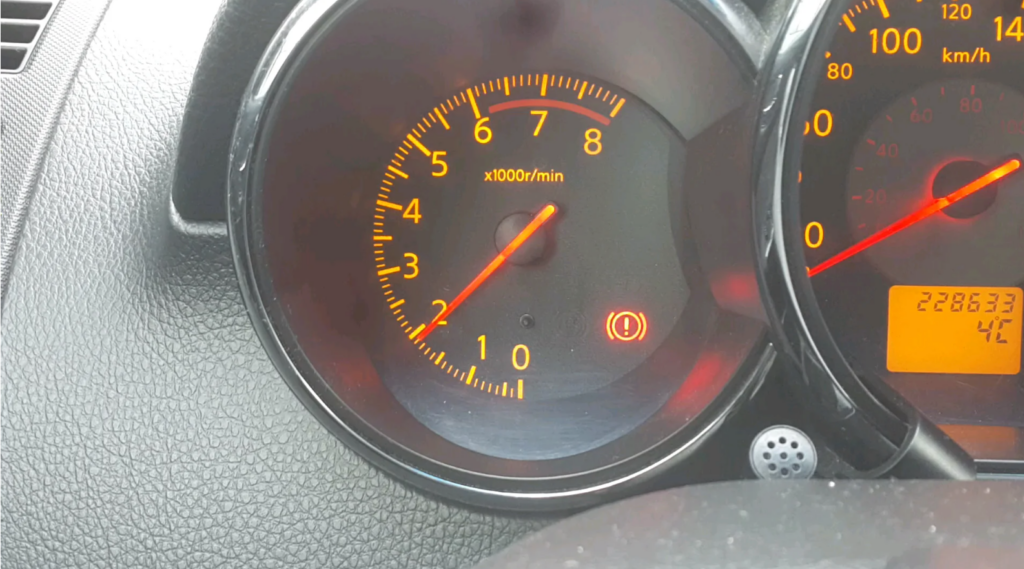
The RPM gauge on your car’s dashboard is an important instrument that shows the engine’s rotations per minute. This measures how fast the pistons are pumping up and down in the cylinders.
The higher the RPM, the faster the engine is running. When the needle points left, the engine runs slower. When it points right, the engine runs faster.
RPM affects how much power and fuel the engine uses. Flooring the gas pedal increases RPM to accelerate quickly. But this burns more fuel.
High RPM without acceleration could mean issues like a vacuum leak, dirty air filter, or bad spark plug. So keep an eye on the gauge.
You should shift gears smoothly to keep RPM in the right zone. This allows a comfortable ride without wasting gas.
The RPM gauge measures engine speed. But vehicle speed depends on transmission gearing. In low gears, high RPM produces more torque to tow heavy loads. In high gears, RPM translates into road speed.
The transmission limits how fast the vehicle goes. Even with high RPM, the gearing prevents exceeding safe speeds. That’s why if you set the transmission in ‘B’ or ‘L’ gear mode, your vehicle speed does not go above a certain limit.
What are the Causes of Slow Acceleration With Increased RPMs
Here are the causes of loss of power despite revving engine:
1. Transmission Slipping Causing Acceleration Issues
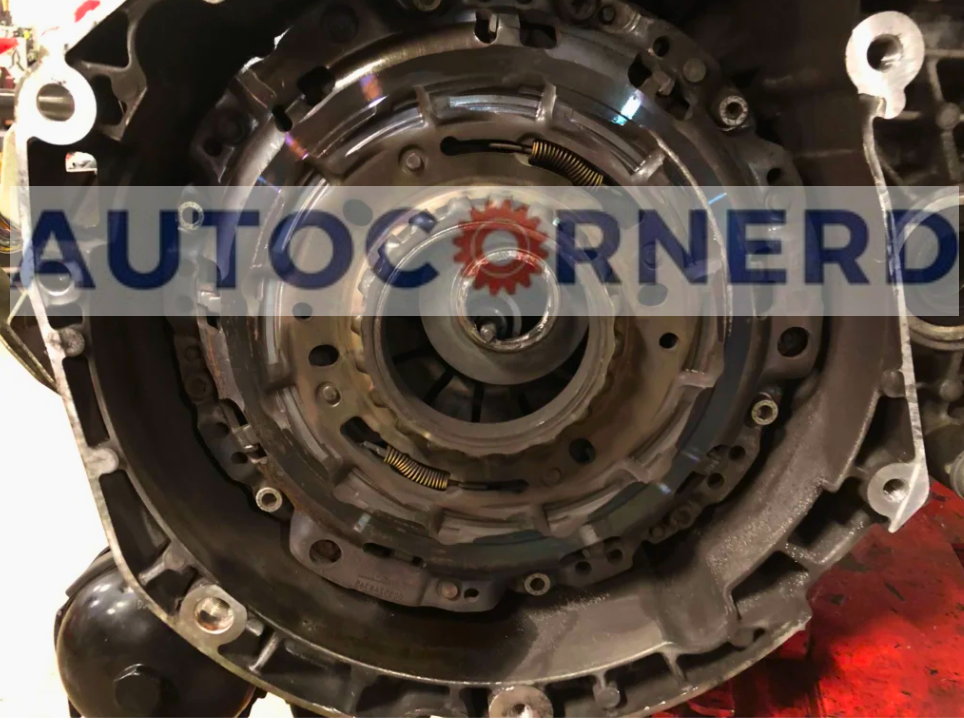
If your car’s automatic transmission isn’t accelerating when RPMs increase, chances are the gears aren’t shifting properly.
An automatic transmission contains several key parts:
- The torque converter is a fluid coupler that transfers power from the engine to the wheels. Filled with transmission fluid, it reduces friction for smooth operation.
- Solenoid valves direct the transmission fluid flow to control gear shifting based on acceleration/deceleration needs.
- Connected to the valve body, they open/close passages that route fluid to shift gears.
- The valve body houses small channels that guide the transmission fluid.
- Pressure control solenoids maintain fluid pressure in the valve body at the desired level. Shift control solenoids route fluid through valve body channels to shift gears.
- Transmission fluid transfers power and reduces friction.
- Clutch bands engage and disengage to change gears.
If gears aren’t shifting correctly when RPMs increase, the issue likely lies with one of these components.
The torque converter may not be transferring enough power. Solenoids could be stuck, failing to open/close to direct fluid. Valve body passages could be blocked, preventing fluid flow. Low transmission fluid pressure or levels could prevent smooth gear changes.
In the below figure, I have shown the valve body and solenoids for Hydra-Matic 4L65-E:
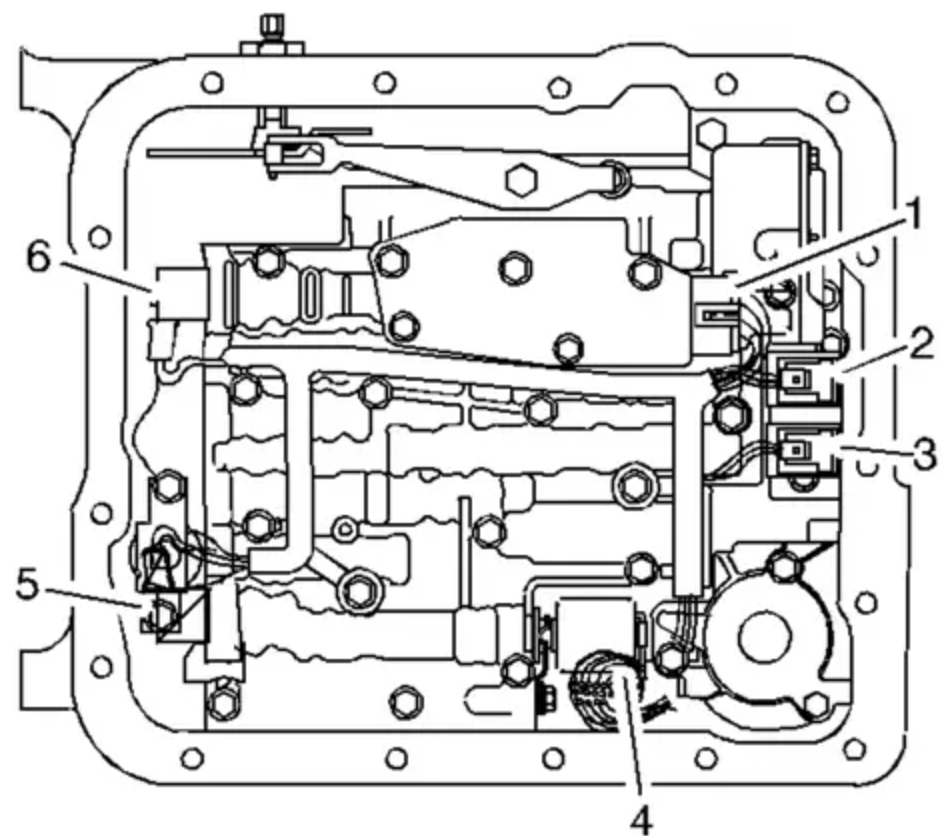
- Transmission fluid pressure switch
- 1-2 shift control solenoid
- 2-3 shift control solenoid
- Pressure control solenoid
The clutch bands are responsible for shifting the gears, and they are connected to the valve body. Transmission fluid, after passing through control solenoids, exerts hydraulic pressure to clutch bands to engage and disengage them.
How to spot?
The main reason for transmission slipping is the low or bad transmission fluid. Like engine oil, transmission fluid has also a dipstick. You should make sure that the transmission fluid level is between high and low marks on the dipstick.
Warming up the transmission is key before you check the fluid level. Here are the steps:
- Park your car on flat ground so it’s level. Start up that engine and let it run for a minute or so, just enough to get the transmission oil heated up to around 90-100°C. The marks on the dipstick only work if the fluid’s warm.
- With the engine still running, press the brake and slide the shifter through each gear, holding for about 5 seconds in each. Then put it in PARK and turn off the engine.
- Grab a clean rag and pull out the transmission dipstick, wiping it down well. Slide the dipstick all the way back in the transmission.
- Now comes the moment of truth. Slowly remove the dipstick again and examine the fluid level. If it’s below the lower mark, your transmission oil is too low.
Note: If a car has been in use for a long time under different driving conditions – such as high-speed highways, city streets, hot days, or even towing a trailer – it is necessary for its transmission fluid to cool down to 90ºC for an accurate reading.
If the transmission fluid has a dark color, it means that you should flush the transmission.
Next, you should check the control solenoids in the valve body. You can watch the below youtube video to test the solenoids of an automatic transmission system:
Worn-out clutch pads can also slip, resulting in the ineffective acceleration with high engine RPM.
When it comes to clutches, the abrasive material found in the clutch pads is essential for providing the grip necessary to apply pressure on the different gear sets within the drivetrain.
Over time, however, when the clutch pads wear out, their grip begins to deteriorate, leading to the clutch slipping and no longer engaging the gear.
2. Bad MAF/MAP Sensor Causing Lack Of Power On Throttle
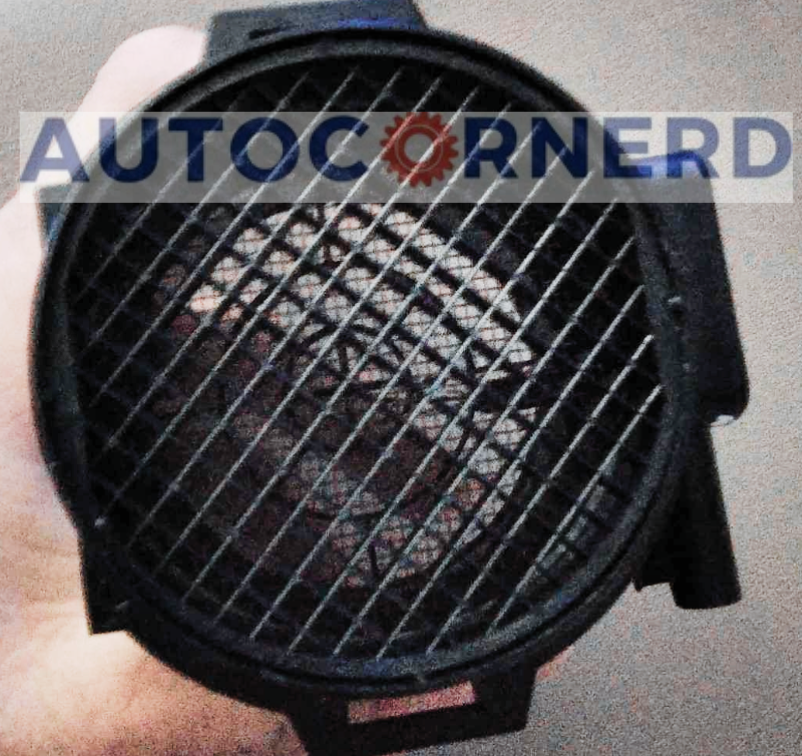
After confirming your automatic transmission isn’t the culprit behind your car’s acceleration issues, it’s time to check the components affecting fuel combustion efficiency. One key component is the MAF or MAP sensor.
To determine which sensor your engine uses, consult the owner’s manual. For my 2018 Toyota Vitz, it’s the MAP sensor.
The MAF sensor measures incoming air volume using a heated wire in the intake. This helps the ECU determine the right fuel amount to inject into the cylinders. You’ll typically find the MAF after the air filter and before the throttle body.
In contrast, the MAP sensor measures intake manifold pressure. This helps the computer gauge engine load and required fuel amounts. The MAP sensor is usually right on the intake manifold.
How to spot?
MAP sensor sends voltage signals based on changes in the vacuum in the intake manifold. When the engine is idle, the vacuum is maximum.
So, the voltage shown by the MAP sensor should be minimum at that point. As you press the gas pedal, the vacuum decreases and the voltage reading sent by the MAP sensor also increases.
Before testing the MAP sensor, make sure that the vacuum hose attached to it does not have any dips or sags. Furthermore, there should not be any moisture inside the vacuum hose.
Now, turn on the ignition key and keep the engine off. Attach the probe of the multimeter with the signal wire of the MAP sensor. It should read around 4 volts.
Now, start the engine, and operate it until normal operating temperature is achieved. Read the voltage of the MAP sensor at the idle speed of the engine using the multimeter, It should be around 1.6V.
Now, press on the accelerator pedal and note the voltage of the MAP sensor. If the voltage does not increase, it means the MAP sensor is bad.
You should have access to the specifications of the MAP sensor installed in your engine to get an idea of the correct range of voltages.
Experts do not recommend cleaning the MAP sensor. So, you have to replace it.
MAF sensor also sends voltage output to the ECM. As the mass flow rate of air through the MAF sensor increases, voltage output also increases.
As you press the gas pedal, more air passes through the MAF sensor. As a result, voltage output increases. At idle, the voltage should be less than 1.0V. As you increase RPM, the voltage output by the MAF sensor increases from 1.0V to 1.7V.
If the voltage of the MAF sensor is fluctuating, you can clean that heated element of the MAF sensor using this cleaner. Be sure to never touch that wire of the MAF sensor. Let it dry completely before re-installing the sensor.
Here is a short Youtube video explaining how to clean the MAF sensor.
3. Dirty Throttle Body Restricting Airflow
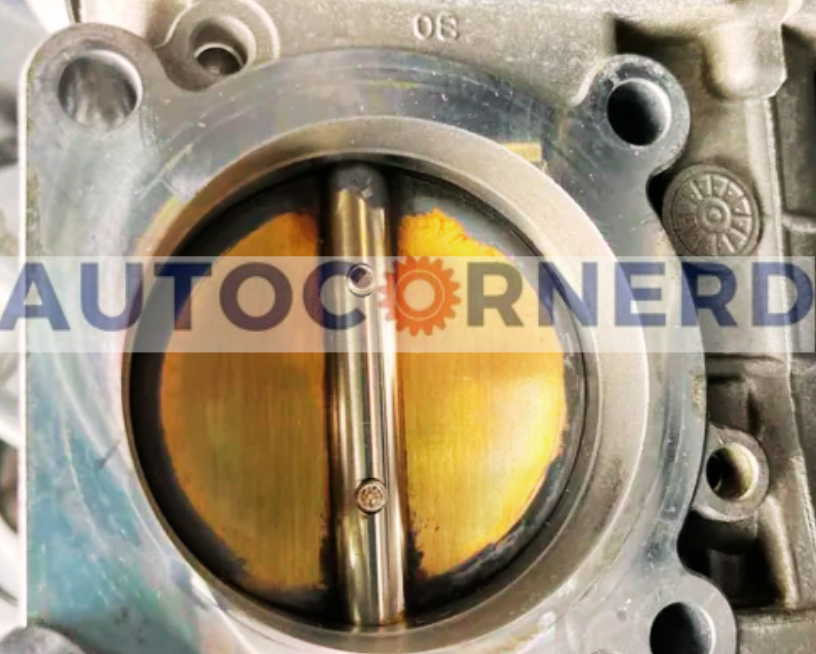
The engine in your car needs to breathe. A part called the throttle body makes this happen. It is a valve that lets air flow into the engine.
When you step on the gas pedal, it opens the throttle body more. More air goes into the engine. This gives more power to accelerate.
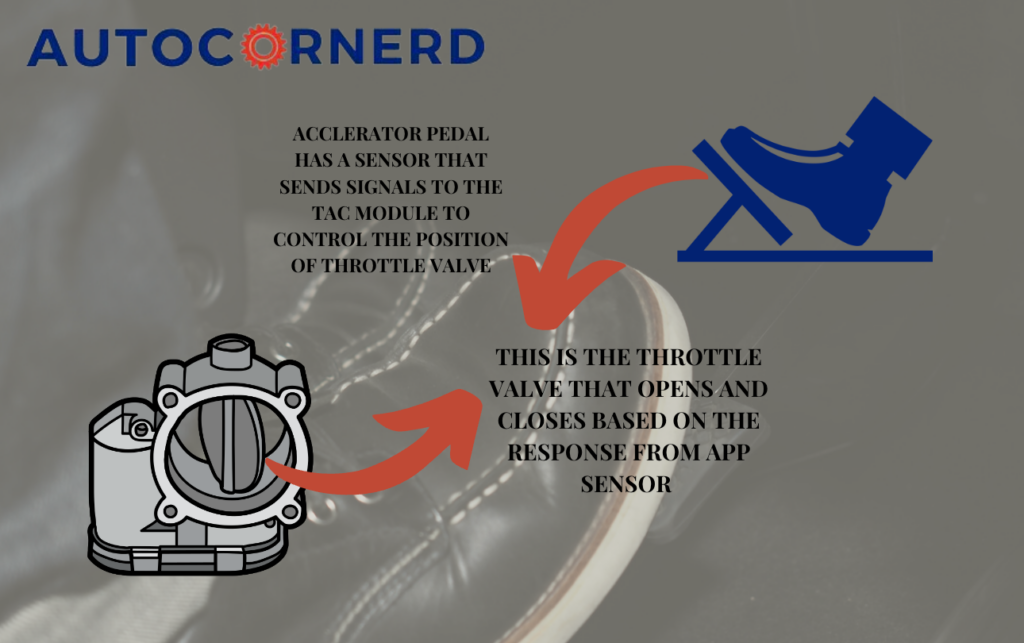
Over time, gunk can build up inside the throttle body. All that gunk chokes it like a dirty air filter.
Signs of a dirty throttle body are:
- The engine feels sluggish when you step on the gas.
- The car gets worse gas mileage than before.
- When you accelerate, the RPMs go up but the car does not speed up.
Why does this happen? Because a blocked throttle body starves your engine of air. Without enough air, the engine cannot burn enough fuel. It cannot make full power.
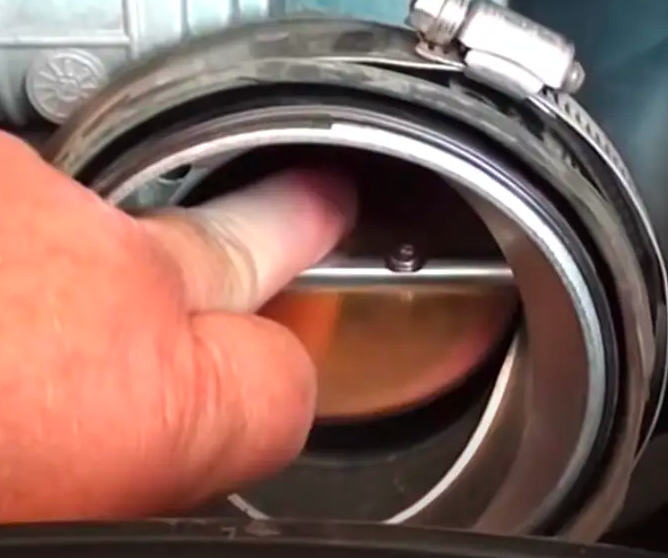
How to fix?
You should use this throttle body cleaner to clean the throttle body. Remove the throttle body from the engine and scrub it with a soft piece of rag after spraying the throttle body cleaner.
You can also use this brush kit to gently dislodge the dirt inside the throttle body. Make sure to spray the throttle body cleaner by staying 10 to 12 inches away from the throttle body.
4. Clogged Fuel Injectors Prevent Proper Fuel Delivery Under Load
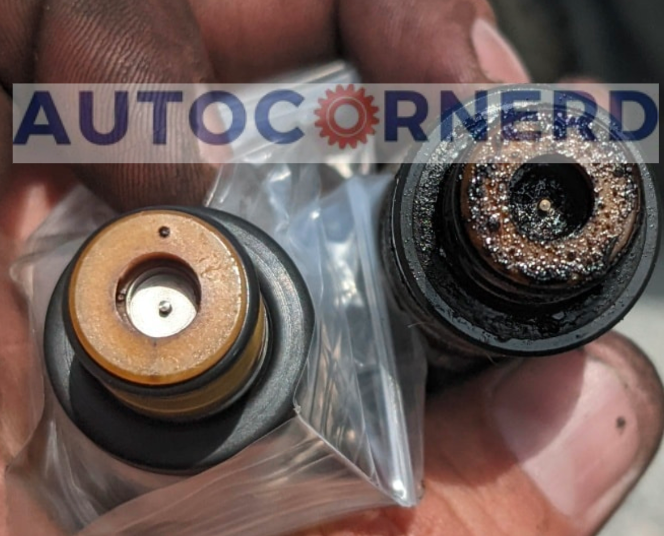
Fuel injectors are like tiny nozzles in your car’s fuel system. Their job is to spray just the right amount of fuel into the engine at just the right time.
When gunk builds up and clogs the fuel injectors, they can’t get enough fuel into the engine. This leaves the engine running lean, meaning there’s not enough fuel to properly ignite.
So the engine has to work extra hard to make the same power. The RPMs climb higher as the engine strains. And with all those high revs, the engine won’t be able to speed up properly when you step on the gas.
The fuel injector itself is an electronically controlled valve. It opens and closes real quick to control exactly how much fuel gets sent to the engine. The car’s computer, also called the ECU, is in charge of operating the fuel injectors.
Sometimes car does not start after replacing fuel injector. So, make sure to read my guide on that topic.
How to spot?
Fuel injectors are clogged due to carbon deposits and the accumulation of dirt around the nozzle of the fuel injectors.
A fuel injector can also become damaged due to its faulty magnetic coil. If you look at the fuel injector, you will see its two terminals. These are the endpoints of the magnetic coil of the fuel injector that carries electric current.

A fuel injector also consists of an o-ring to prevent leakage of fuel. You should check if the o-ring is damaged. Usually, the engine manufacturer has specified the part number of the O-ring to be installed on the fuel injector. Use your palm to push the o-rings until they sort of “pop” into place.
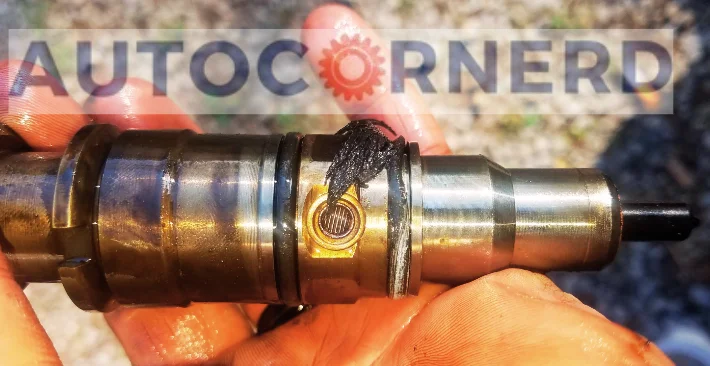
How to test?
There are several methods to test a bad fuel injector. You have to check the fuel injector electrically, and also make sure it is delivering the fuel. First, you should have a multimeter and connect its probes to the terminals of the fuel injector.
Set your digital multimeter to an appropriate value on the Ohms scale according to the resistance specifications for your particular fuel injector (usually, you need to set the multimeter to read at least up to 30 Ohms).
If the resistance across terminals of the fuel injector reads infinite resistance, it means the coil in the fuel injector is opened.
If the multimeter shows OL or very small resistance, it means that the coil in your injector has short-circuited. If it shows resistance specified in the specs of your fuel injector, it means that the coil of the fuel injector is fine.
Another test for a bad fuel injector is to observe if it is emitting a clicking noise or not. For this, you would need a long screwdriver to hear the clicking noise. Now, pull out the fuel rail. But make sure that it is connected to the fuel supply hose.
Turn the key on to prime the fuel pump and pressurize the fuel line. Now, hook the 9v or 12v battery one by one to each fuel injector and try to hear its ticking noise with a long screwdriver.
That ticking noise is basically the opening and closing of a pin in the fuel injector.
Also, see if the fuel injector is injecting fuel in a certain direction without leaking or not. If it’s leaking, you would need a new fuel injector.
You can check out the following video from 2:40 to get an idea of how to test fuel injectors.
Apart from the above experiments, check these things on the fuel injector:
- Look for burrs on the injector inlet
- Check nozzle holes for hole erosion or plugging
- Inspect the end of the nozzle for burrs or rough machine marks
- Look for cracks at the nozzle end
5. Fouled Spark Plugs Causing Misfires and Affecting Power Delivery
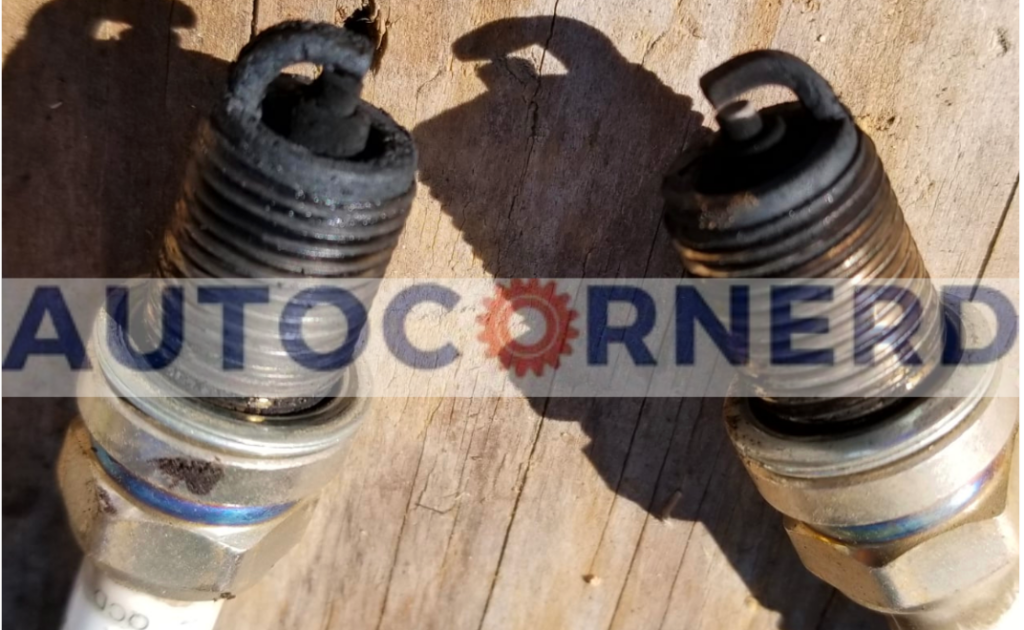
The car engine needs the spark plugs to be in good condition for proper functioning. But over time, residue deposits on the spark plugs can cause problems. This residue coating on the spark plugs is called fouling.
There are a few possible causes of fouled spark plugs. One is oil deposits building up. Fuel residue can also leave deposits that foul the spark plugs. And carbon buildup from the combustion process is another fouling culprit.
When a spark plug gets this fouling, the deposits coat the plug and prevent the spark from igniting the fuel correctly. This makes the engine misfire or hesitate. If the car is revving high but not accelerating, fouled spark plugs could be the reason.
You can learn the signs of fouled spark plugs in more detail through this PDF guide. It explains how to recognize fouled spark plugs by the color and texture of the deposits.
Another type of fouling happens when the porcelain insulator part of the spark plug is stained brown. This is from a corona discharge effect at high voltages. The brown corona stains also reduce how well the plug works, causing potential misfires.
How to spot?
When fuel mixtures tip too far rich with excess fuel, it creates a heavy vapor buildup on plugs over time.
Fuel injectors bear huge responsibility, injecting just the right proportions of fuel inside each cylinder. Bad injectors over-inject, immediately causing excess buildup on spark plugs upon ignition.
Oil and dirt also menace spark plug firing performance. Air filters and intakes capture particles before they invade cylinders. But once dirty or clogged, specks of oil and grime slip through, leaving a residue on plugs.
Similarly, engine oil levels topping too high pushes oil where it doesn’t belong. Just a bit too much, and oil seeps into cylinders, gradually coating spark plugs each cycle.
How to fix?
You can try cleaning the spark plugs using the wire brush and spark plug cleaner to carefully remove any carbon deposits or contaminants from the electrode. Ensure not to damage the electrode or insulator in the process.
First, use compressed air to clean off any dirt and debris. Then, keep the spark plug soaked in the brake cleaner till all the gunk on the spark plug is washed away. If the spark plug still doesn’t ignite properly, you need to replace it.
Do you know your car can also have intermittent starting issues if there spark plugs get fouled? You can read my guide on that topic to learn more.
6. Vacuum Leaks Trigger Incorrect Air-fuel Ratios
The interface between extra air and the engine is called a vacuum leak. This happens when air sneaks in without going past the MAF or MAP sensor.
These sensors are supposed to notice all air entering so they can tell the engine computer to add the right fuel. With a leak, unmeasured air alters the air-fuel ratio and makes things too lean.
When the mix isn’t right, RPMs will jump up instead of accelerating if you hit the gas. The engine spins faster trying to gulp missing fuel. So the car won’t speed up normally even though RPMs rise.
How to spot?
Here is how to spot vacuum leaks in engine:
- Fragile Hoses: Vacuum hoses enable airflow routing. But wear and tear through the years can crack these plastic hoses. Even a tiny hole passes unwanted air.
- Gasket Defects: The intake manifold gasket isolates the air intake from external elements. Leaks here siphon unmeasured air into the cylinders.
- Faulty Valves: Both PCV and EVAP purge valves play crucial gating roles. If they are stuck open, excessive air leaks into the engine and disturbs the air-fuel mixture.
You can use a carb cleaner to detect vacuum leaks in the engine. You can watch the below Youtube video for a better understanding.
7. Dirty Engine Air Filter Impacting Air Flow During Acceleration
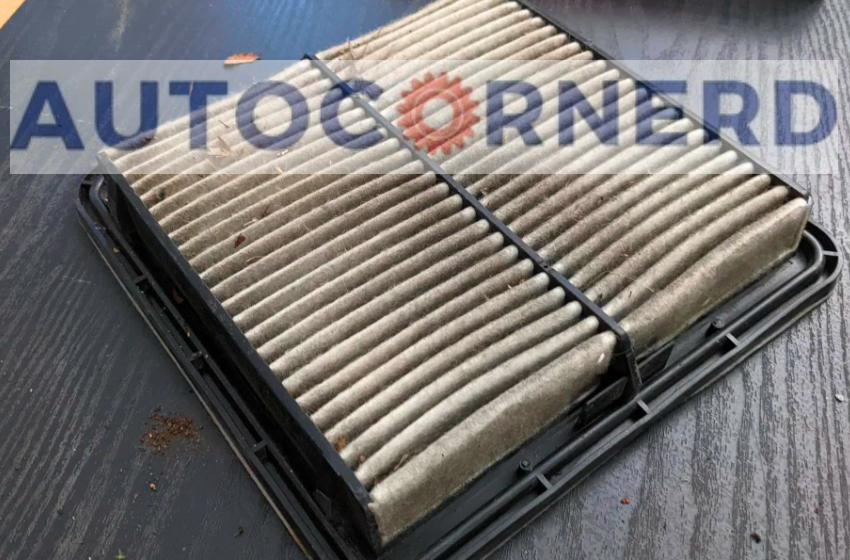
The engine air filter’s job is to stop dirt and gunk before it enters the engine. Over time, the filter gets dirtier and works less well.
When the engine air filter is dirty, less air enters the engine. So the car won’t speed up fast, but the RPMs go up anyway.
This happens because the air filter doesn’t catch all the dirt in the air now. The engine needs clean air to burn fuel the right way.
So the engine doesn’t get enough air to work its best. The RPMs go up because the engine is trying hard to make the car go faster despite the poor airflow.
How to check the filter?
Hold it up to light. If you see lots of dirt blocking the tiny holes, replace it. Also tap it gently – if lots of dust falls out, it needs replacing.
How to fix?
Typically change the engine air filter every 15,000 to 20,000 miles. Though, it’s good to inspect it whenever you change the oil.
Also, blow compressed air through the filter every 500 miles to keep it cleaner.
8. Bad Fuel Pressure Regulator Affecting Fuel System Pressure
The fuel pressure regulator is an important engine component that keeps fuel pressure steady. This steady fuel pressure allows proper car acceleration and good gas mileage.
If the fuel pressure regulator fails, pressure can get too high or low. Either extreme causes driveability problems.
With a bad fuel pressure regulator, the engine still runs but the car won’t accelerate right. Because fuel pressure pressure is wrong, the engine doesn’t get the right fuel amount.
Gasoline direct injection (GDI) engines have a fuel pressure sensor instead of a regulator. This sensor measures the fuel pressure inside the fuel rail and tells the ECU to maintain it.
If you want to understand how a fuel pressure regulator works and fails, read my guide on bad fuel pressure regulator symptoms. There I explain what a regulator does and where it goes, with a diagram.
Also, a dirty throttle body that needs frequent cleaning can mean a faulty regulator. Its internal diaphragm can break and let fuel reach the throttle body.
9. Malfunctioning Oxygen Sensor Providing Faulty Combustion Data
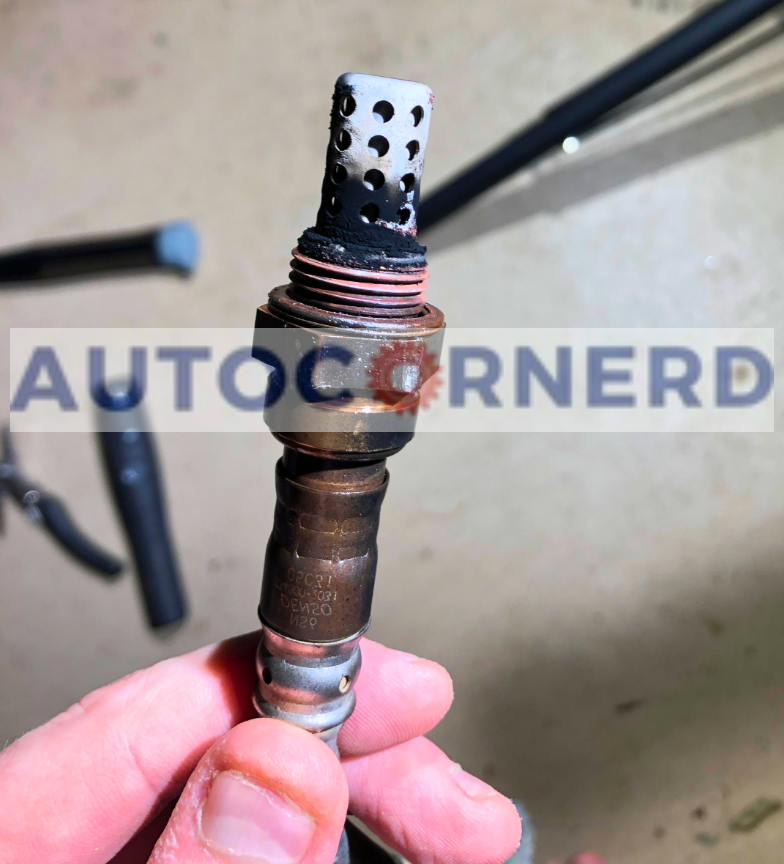
The oxygen sensor plays a key role in monitoring the vehicle’s engine performance. Sitting in the exhaust stream, it detects oxygen levels to regulate the air-fuel mix.
If damaged, the sensor can throw this ratio off, making the engine run poorly. One hint of oxygen sensor troubles is when revving doesn’t increase speed.
Most vehicles have two oxygen sensors – one before and one after the catalytic converter. Focus diagnostics on the first, as it directly controls the air-fuel blend.
How to spot issues?
A healthy oxygen sensor’s voltage oscillates as oxygen levels change. Readings outside a normal 850mV to 150mV range over two seconds can indicate problems. Stuck high or low voltage points to sensor failure.
To test, connect the positive voltmeter lead to the sensor’s signal wire. For two-wire sensors, attach the negative lead to the sensor’s ground. Look for unstable readings.
10. Leaking EVAP System Reducing Fuel Vapor Recycling
The Evaporative Emission (EVAP) system controls fuel vapor emissions from your car’s fuel system.
The EVAP system routes vapors into the engine intake manifold instead of the atmosphere.
Four main parts make up the system:
- Charcoal Canister: Stores fuel vapors in an activated charcoal filter inside a sealed container, mounted near the fuel tank.
- Purge Valve: An electrically operated EVAP purge valve that opens to allow stored vapors into the engine to be burned.
- Vent Valve: Allows fresh air into the charcoal canister, stays open unless a leak is detected.
- Fuel Tank Pressure Sensor: Monitors pressure inside the fuel tank.
In my guide on engine won’t crank after gas, you can learn the proper working of the EVAP system with a schematic diagram.
Normally, stored vapors are metered into the engine. But issues occur if components fail.
A stuck open purge valve can overwhelm the engine with excess vapors. This hampers acceleration as the engine tries to burn them off. You may see error code P1450 on Fords if the purge valve is bad.
You can watch the below video to test the EVAP purge valve:
Why Is It Important to Know Your Engine’s RPM?
Keeping an eye on your vehicle’s rotations per minute (RPM) helps maintain smooth and thrifty operation. At idle, most rides hover around 650 to 950 RPMs. As you press gas pedal, those numbers climb contingent on horsepower specs.
The revs offer insight into fuel economy as well. Higher RPM equals greater gas guzzling compared to lower RPM. Glancing at the tachometer provides data to calibrate driving habits for max miles per gallon, saving bucks at the pump.
Excessive RPM overworks the engine, decreasing efficiency and hastening wear and tear. Conversely, insufficient RPM causes poor performance. Understanding your car’ RPM range keeps it running optimally.
Why Do Some Cars Have Higher RPM Than Others?
It can be a bit confusing, especially if you don’t know much about cars. The truth is, there are a few different factors that can make this happen. One of the most common is engine size.
Smaller engines need to spin faster to generate the same amount of power as larger engines. That’s why cars with smaller engines tend to have higher RPMs.
In small engines, the piston travels a lesser distance from bottom to top in the engine cylinder. So, a small engine has to spin faster to generate the same power as a large engine does at a lesser RPM.
However, the greater engine’s higher RPMs would consume more fuel as it generates more friction. For this cause, cars with larger displacement engines exhibit superior fuel efficiency when traveling at high speeds on freeways.
What Should I Do When Car Is Not Accelerating With RPMs?
The first step is to check if the check engine light turns on in the car’s dashboard area. In most cases when some issue happens with the engine or transmission, the engine control module switches on the check engine indicator light and records OBD2 trouble codes.
Sometimes this check engine light can turn off by itself, but you should connect this OBD2 scanner tool to scan for any fault codes stored in the engine computer’s memory bank.
Using the fault code makes troubleshooting much simpler since you avoid needing to physically check every separate engine component to repair the vehicle’s acceleration problems.
What Exactly Is Efficient Combustion In Engine?
An engine needs a balanced intake of air and fuel to burn efficiently.
Proper combustion depends on maintaining an air-fuel ratio as close to 14.7:1 as possible. At this sweet spot, the engine achieves better gas mileage, acceleration, and power output.
Today’s computerized engines use sensors to continuously adjust the fuel volume to match incoming air. This optimizes combustion no matter the conditions.
But sensors alone can’t guarantee efficiency. Parts like fuel injectors, air filters and spark plugs directly impact how cleanly the mixture burns.
Some First Hand Experiences Shared By Users In Different Communities
Our team conducted research across various online communities, forums, and subreddits to gather user comments and opinions on “car not gaining speed with high revs”.
User 1 says:
I own a 2008 Ford Escape. Recently, it started having issues with acceleration; the engine revved but the car wouldn’t pick up speed. Initially, I thought it was a fuel issue, but after checking, everything seemed normal. The real culprit turned out to be the throttle body. It was malfunctioning, causing the engine to rev without proper acceleration. I replaced the throttle body and also cleaned the mass airflow sensor as a precaution. After these repairs, my Escape was back to normal, accelerating smoothly.
User 2 says:
I drive a 2012 Chevrolet Malibu. A while back, it began struggling to accelerate, although the RPMs were rising. It turned out to be a faulty transmission pressure control solenoid. This part controls fluid flow in the transmission and can cause acceleration issues when it fails. After replacing the solenoid and doing a transmission fluid flush, my Malibu’s acceleration returned to normal.
User 3 says:
My experience was with a 2010 Nissan Altima. The car had trouble accelerating, but the RPMs were going up as if it was trying hard to move. After a bit of investigation, I realized the issue was with the catalytic converter. It was clogged, causing a restriction in the exhaust system, which in turn affected the acceleration. Replacing the catalytic converter solved the problem entirely.
User 4 says:
I own a 2017 Kia Sorento. Recently, it had a problem with acceleration – the RPMs increased but the car didn’t pick up speed. After checking, I found out that the air filter was extremely clogged, which I hadn’t noticed for a long time. This was restricting air flow to the engine, causing the acceleration issue. Once I replaced the air filter, the Sorento’s performance improved significantly.
User 5 says:
In my 2011 Dodge Charger, I faced a similar acceleration issue. The RPMs would rise, but the car wouldn’t accelerate properly. After some diagnostic work, I discovered that the issue was with the oxygen sensors. They were malfunctioning, sending incorrect data to the engine’s computer, and disrupting the fuel-air mix. Replacing the oxygen sensors fixed the acceleration problem.
User 6 says:
I drive a 2009 Honda CR-V. It started having problems with acceleration; the RPMs would increase, but the car wouldn’t speed up. Initially, I thought it was a transmission issue, but it turned out to be the accelerator pedal position sensor. This sensor was not working properly, causing a discrepancy in the acceleration. Replacing this sensor solved the problem, and my CR-V drives smoothly now.
